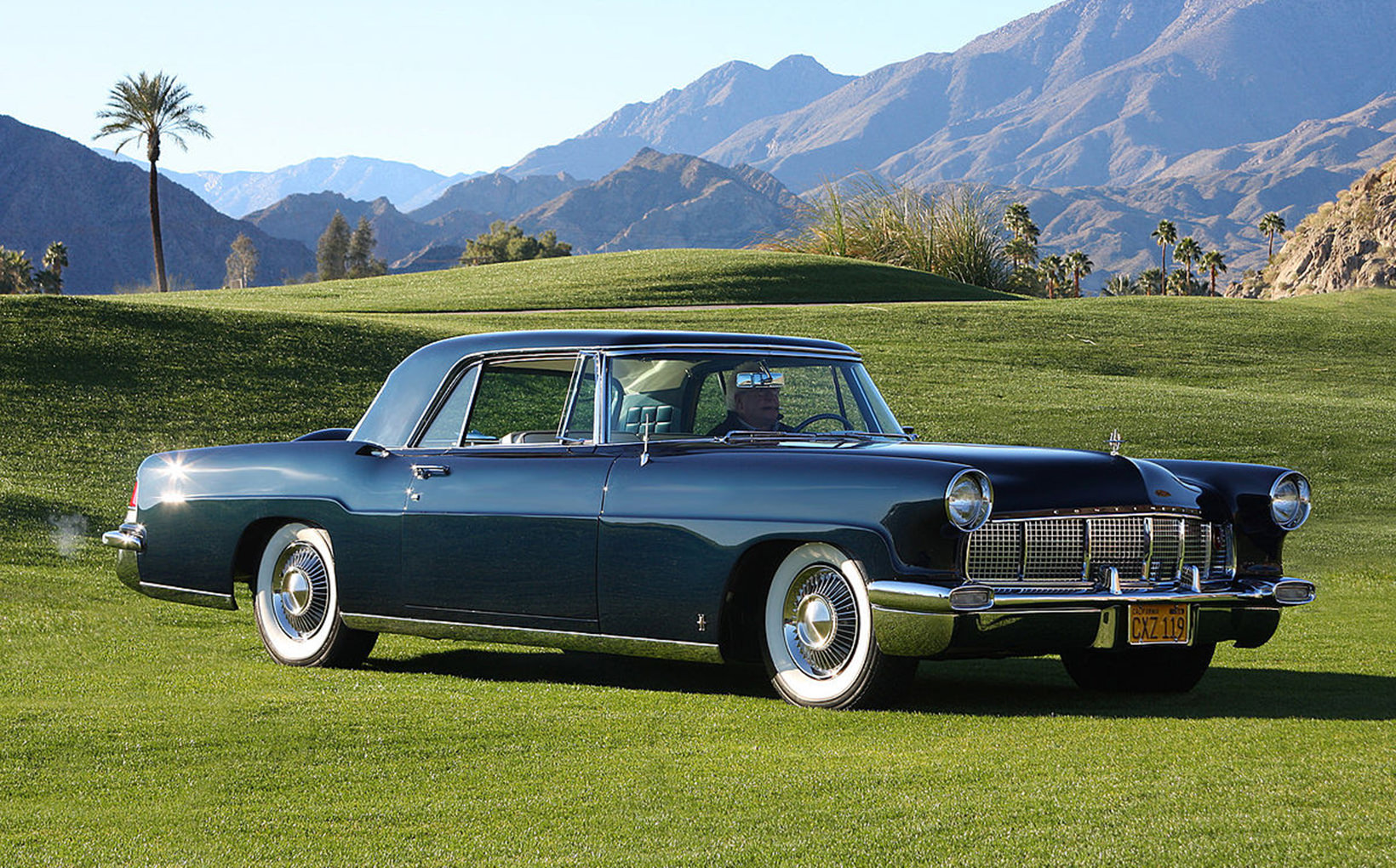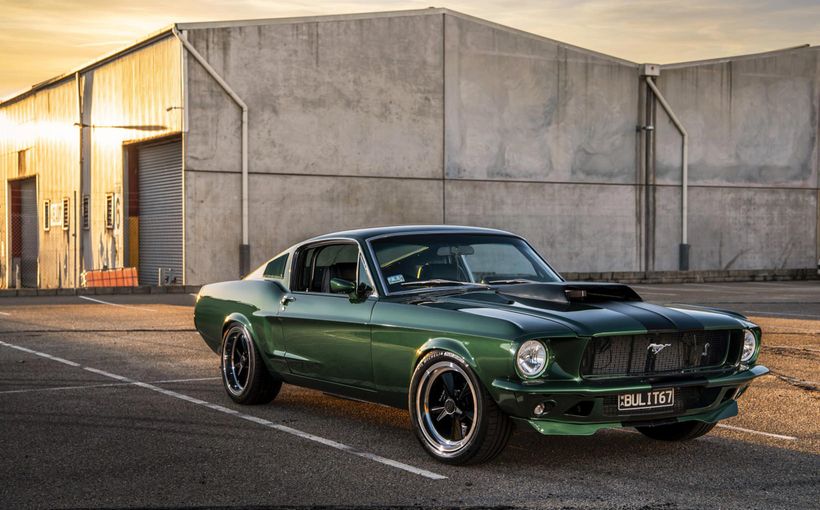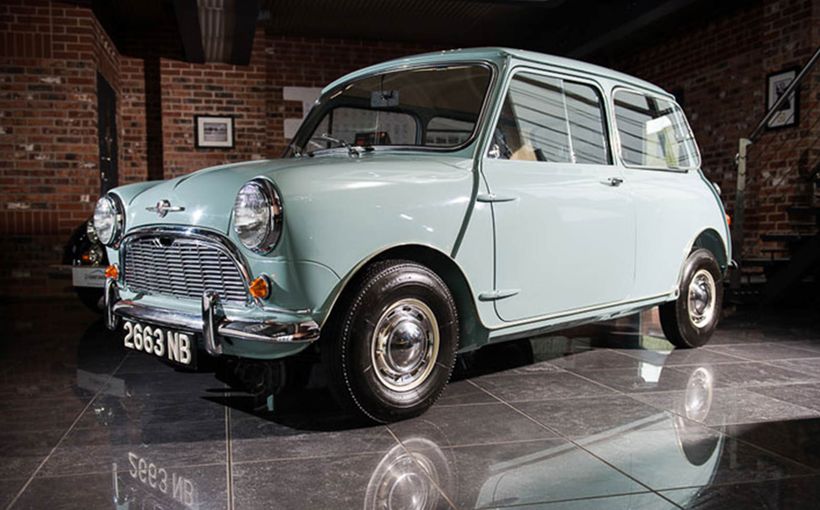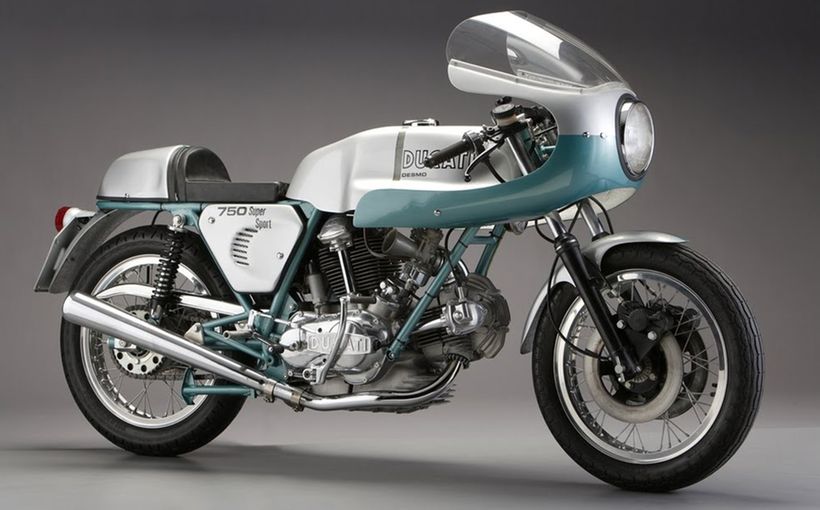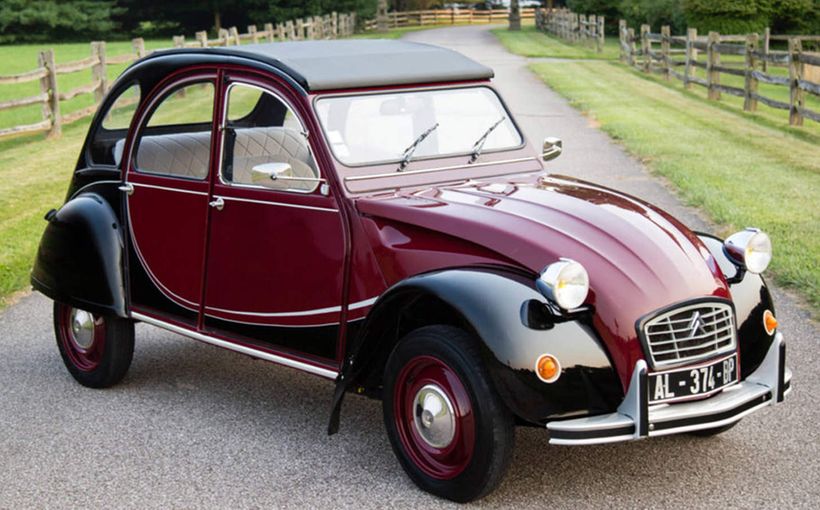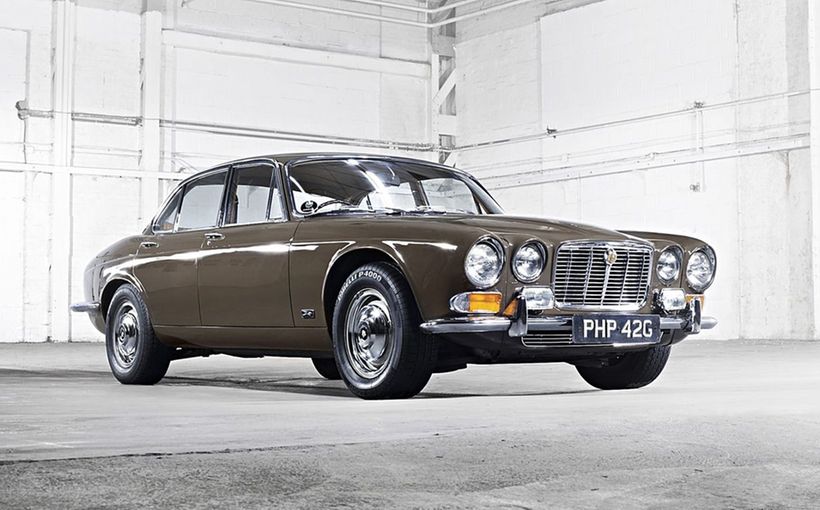Lincoln Continental and ‘Mark’ Series: Edsel Ford’s Legacy

The automotive sub-brand Continental is nowadays more closely associated with Bentley than Lincoln, but that word ‘Continental’ resonates lyrically in the history of the Ford Motor Company and, indeed, of the Ford family itself.
Henry Ford’s only son Edsel was a very different kind of man from his father. In 1910, when Edsel was 17, Henry said to the painter Irving Bacon: ‘Shake hands with my son. Edsel is the artist in our family. Art is something I know nothing about.’
When it came to cars, Edsel once said, ‘Father made the most popular car in the world, I would like to make the best.’

Image: https://en.wheelsage.org/
Those who knew him said Edsel was a man of remarkable taste and refinement. Father and son were close, and Edsel was always destined to be president of the company, a position he assumed in 1919. Despite the title, he was frequently overruled and sometimes publicly humiliated by Henry.

Image: https://en.wheelsage.org/
Edsel did preside over the purchase of Lincoln in 1920 and finally had the chance to indulge his own taste to the full the following decade, firstly with Bob Gregorie’s Lincoln Zephyr of 1935, a car subsequently described by the New York Museum of Modern Art as ‘the first successfully designed streamlined car in America’. It was also V12-powered. Edsel had a one-off car, the ‘Continental’, developed by Gregorie from the 1939 edition of the Zephyr, created for his own use. Could a more different kind of Ford be imagined from the Model T, which Henry Ford 1 had been so loath to change through its production life of almost two decades?
A second prototype soon followed after the decision was taken to put the Continental into production. This one proved very close to the production version, a model sometimes acclaimed as the most beautiful car created in Detroit – and even the world – up to that time. Robert Lacey in Ford: the Men and the Machine says ‘the Continental was a classic car in the age of the classic car’, which is correct as far as it goes; what needs to be added is that the Continental appeared just when the extravagant era of limited production, custom and semi-custom cars was ending; everything would be different after World War Two.

Image: https://en.wheelsage.org/
Indeed, after the war, the Continental was already on borrowed time. This had been a beautiful, exclusive top-end car almost in the tradition of Duesenberg and Packard. Edsel had died of cancer in May 1943 (attributed by some members of the family to Edsel’s strained relations with his father) and there was no appetite among Henry Ford and his team of yes-men to create a second Continental; the original lingered until 1948 (meaning it was current for model years 1940, 1941, 1942, 1946, 1947). So, this most elegant of Fords essentially died with Edsel. It would only be when the third generation, Henry II and his younger brother William Clay, came to power that there would be renewed interest in creating a bespoke flagship.
When the successor to the original Lincoln Continental made its debut, not only was Paris the venue but the car was the product of its own ‘Continental’ division.
Superb as the 1940-1948 Continental was, its underpinnings were essentially shared with the far less prestigious Zephyr. From 1936 to 1939 revisions to the Zephyr were minor and model year 1940 had been chosen for the first extensive upgrade. On 2 October 1939, this new car was announced.
(In October 1946, the Lincoln-Mercury Division was formed and the idea was essentially that Mercurys would be more like smaller cutprice Lincolns than ritzed-up Fords.)

Image: https://en.wheelsage.org/
But they were difficult years for Ford as its founding father, surrounded by henchmen, made increasingly erratic decisions. Finally, it was family pressure from his wife Clara and daughter-in-law Eleanor (Mrs Edsel Ford) that enabled his grandson Henry Ford II to assume control. The younger Henry, who apparently nurtured mixed emotions about his grandfather, had been heard to say: ‘He killed my father.’
Where old Henry was homespun in his tastes, Edsel’s eldest son looked to Europe in much the way his father had done. As Robert Lacey observes:
Henry II had grown up surrounded by beautiful things. A son of Edsel and Eleanor Ford could not help but have good taste.
In July 1952, Henry Ford II, well in control and surrounded with his so-called Whiz Kids (chief among them Robert McNamara, later very briefly to be president of Ford before being poached by newly elected President John F. Kennedy as his Secretary of Defense), was keen to introduce a second Continental. Youngest brother William Clay (Billy) Ford was given control of Special Product Operations which became its own division (Special Products Division) 15 months down the calendar.
Edsel’s memory would be perpetuated in the grandest car Detroit had produced since the Second World War. Not only was there no doubt as to what this car should be called – unlike the Edsel itself, of which a little more later – but on 19 April 1955, and still under Billy, the Continental Division was established.
Part of Henry II’s grand vision was to create a corporate structure along the lines of General Motors’. Had things run to plan, from the bottom up it would have been Ford, Edsel, Mercury, Lincoln, Continental.

Image: https://classiccars.com
Was the Continental Division the shortest-lived such enterprise in existence? On 21 July 1956, it was wound-up: its sole fruit, the Continental Mark II had been shown at the Paris Salon seven months to the day earlier (21 October 1955).
The Mark II was a truly beautiful and worthy luxury car, which failed to attract sufficient customers. The price was a little less than $10,000 and somewhat more when the sole option ($740) of air-conditioning was fitted. This was almost equal to a Rolls-Royce Silver Cloud and not far short of twice the price of a Cadillac 62-Series. Perhaps the Mark II was marketed poorly, but it seems to have been too much car at too high a price for the US market of the time. Few industry observers could have guessed in 1956 that the Continental would prove to be a much rarer car than the Silver Cloud, even in the US!

Image: https://rmsothebys.com
Ford’s two-minute promotional film for the Mark II seems confused, claiming on the one hand that this is a big car and on the other that it is not bulky. Somehow the true grandeur of the machine does not make it into the script or onto the screen.
Regardless, the public missed the message. Few consumers in this stratospheric price range could see justification in choosing a two-door Ford over an Eldorado, or even a Rolls-Royce. Indeed, Cadillac had built a long pedigree for extreme luxury cars, while Lincoln’s was more erratic, and this new car wasn’t even a Lincoln.
It is believed that Ford lost – and had projected to lose – at least 10 per cent of the cost of each Mark II. The idea had been to amortise this across the entire corporation. But with the shrinking of the upper end of the prestige market, the decision was made to fold the separate branding. According to Lacey, this was largely because Henry Ford II’s right-hand man Ernest Breech did not want the division’s red ink to invite questioning of his acumen. (Doubtless, it was harder to drop the Edsel. While the Continental name was a natural, ‘Edsel’ was not and was arrived at almost by default, after the famous poet Marianne Moore had been hired to come up with suggestions.)
The 1956 Continental’s beauty was widely acclaimed on both sides of the Atlantic. Like its predecessor – and the unmistakeable implication of the ‘Mark II’ name was that this newcomer was a lineal descendant of Edsel’s 1940 Continental – it used mostly existing Lincoln mechanicals as well as incorporating some design themes, most notably the boot-mounted spare wheel, albeit with a metal cover in the new iteration. There were, however, some notable refinements.
In the Detroit longer-lower-wider idiom of the mid-1950s and beyond, the Mark II required some special attention. Its body was mounted on a special ‘cow-belly’ chassis which dipped below the front and rear axles and afforded elevated seating with a low roofline. The 368 cubic-inch Lincoln engine promised 285 brake horsepower (SAE) and a top speed in excess of 110 miles per hour.

Image: https://en.wheelsage.org/
Like its predecessor, the Mark II was essentially a semi-custom car. Bespoke items included Bridge of Weir leather from Scotland (which, interestingly, was specified early this century by HSV for its flagship GTS coupe). There was even a leather-clad nacelle for the instruments which included a tachometer. The wraparound windscreen was extreme for 1956 and positioned closer to the driver not only to lengthen the bonnet but to improve visibility.
No other postwar American car had benefited from such an exhaustive seven-point quality control system.
While its sibling Thunderbird, was hailed by the Ford marketing executives as the world’s first personal car, it is more accurate to trace the origins of this concept – just two doors, extroverted sporty styling, a very long bonnet, and a high level of luxury – back to the 1953 Cadillac Eldorado and Packard Caribbean. The original two-seater Thunderbird was actually closer to a new American concept of the sports car.
The plan had been that the Continental Mark II two-door coupe was to be the first of a range of three with the convertible (with retractable roof) and four-door hardtop following. But slow sales saw just two prototypes of the former and none of the latter. The retractable metal roof technology was not wasted, surfacing in the astonishing Ford Skyliner for the 1957, 1958 and 1959 model years.
The Mark II was discontinued after just 1,769 examples had been made – 1325 in 1956 and 444 in 1957.

Image: https://en.wheelsage.org/
Lincoln product planning had been confused through the 1950s with no real sense of continuity of themes but then for model year 1961 came the extraordinary Continental, whose design is credited to Elwood P. Engel (who was undoubtedly the key visionary). The story goes that Engel had designed a new Thunderbird and Robert McNamara instructed him to reconfigure it as a four-door Lincoln. There would be a sedan and a convertible.
Lincoln historian Thomas E. Bonsall writes in in The Lincoln Motorcar:
The 1958-1960 Lincolns and Continentals were, in their own way, as big a disappointment as thew Edsel. What the Edsel was supposed to have done for the corporation’s penetration of the medium price class the Lincolns and Continentals were supposed to have done in the luxury field. Their failure was less only to the extent that the Lincoln nameplate managed to survive the fiasco. In three years Lincoln had lost exactly half its market penetration, and Cadillac, the great rival, was further out of reach than ever.
There was a feeling that Cadillac’s growing success came from a sense of brand continuity – model names and series, fins since 1948. Certainly this was the view of Eugene Bordinat, head of Lincoln styling. McNamara, in his brief spell as president, launched the new car in the fall of 1960, asserting that the new, clean, timeless Continental would not be the subject of pointless annual styling change. And so it was that the 1965 Continental was distinguishable only by aficionados from the 1961 original. This car with its unitary construction (per its predecessor and shared only with the Thunderbird among full-size Fords) doubtless confirmed GM styling boss Bill Mitchell’s pursuit of a new, cleaner look in the aftermath of Harley Earl’s chrome-laden juggernauts.
It was a superbly pure design with modest application of chrome, marked tumblehome and a very low overall height: an instant and influential original. So rigid was the monocoque that the convertible required no additional reinforcement.
In the manner of the Mark II, these Lincolns were the subject of intense quality control and established a reputation for reliability to match their elegance. It was the first car in the world to offer a two-year, 24,000-mile warranty with oil change intervals of 6000 miles.

Image: https://en.wheelsage.org/
The Continental convertible was the only four-door car of this type on offer, although sales were slow. Grimly, it is forever enshrined in history as the car in which JFK was assassinated.
By naming this new model – the sole Lincoln offering – the Continental, not only were memories of the 1940 original and the 1956 Mark II evoked, but the Mark III and Mark IV Lincolns of the 1958-1960 years were effectively demoted, leaving way for the marque to build on the tradition of the 1940, 1956 and 1960-67 models by launching the Continental Mark III in April 1968.
(These 1958-60 Lincolns – sedan, coupe and convertible – were the largest cars ever built using unitary construction, and their quad, canted vertical headlight treatment was nothing if not unique! They were equipped with a 430 cubic-inch engine.)

Image: https://en.wheelsage.org/
From 1961 through 1965, styling changes were minimal, although there was bigger boot for 1963, the wheelbase was increased in 1964 (and the boot enlarged again) and the radical; curved side glass made way for flat, allowing a small increase in interior room. Importantly, front disc brakes arrived in 1965, two seasons before they were made optional on the Cadillac Eldorado.
For 1966, the car was restyled but retained the same themes. It was much larger and featured the fashionable ‘Coke-bottle’ hip, while retaining the trademark rear ‘suicide’ doors. A two-door coupe was added and the four-door convertible continued for another two years.

Image: https://en.wheelsage.org/
April 1968 – midway through season 1968 – the Iacocca-inspired Continental Mark III, positioned above the Continental was introduced as a 1969 model. The choice of nomenclature linked this impressive newcomer with the 1940 and 1956 models and, rather curiously, omitted not only the previous Mark III, Mark IV and Mark V but also its 1961-68 predecessors. Aficionados speak of the ‘Mark’ cars and this tradition includes these three and successors up to the Mark VIII which was discontinued in 1998. This provides the following lineage of Lincoln (and Ford Motor Company) flagships: 1940-48 (retrospectively named) Mark I, 1956-57 Mark II, 1960-68 Continental, 1969-71 Mark III, 1972-1976 Mark IV, 1977-79 Mark V, 1980-83 Mark VI, 1984-1992 Mark VII and 1993-98 Mark VIII.

Image: https://en.wheelsage.org/
The Mark III departed from its 1961-68 predecessors by reverting to body on frame construction (saving some 300lb in the process!), which it shared with the Thunderbird (for economies of scale) which had made this change for the 1967 model. It used a stretched T-Bird four-door chassis with the shorter two-door body. This gave it proportions to imply a powerful rear-drive coupe with a six-foot bonnet (Detroit’s longest in the day) and short deck.
Despite sharing many T-Bird underpinnings and componentry, the Mark III was built to Continental quality standards and the 12-mile road test of each car (per its 1961-68 forebears) applied.
The Mark III was always expected to polarise opinion and entirely succeeded in so doing. Eugene Bordinat, who styled the car, said:
We tried to be a little controversial…When they see it, people will be divided into two camps… Some will decide they have to have it. Others wouldn’t touch it with a ten foot pole…The buffs may not like it, but the people with money will.’
According to Bonsall, while the original Continental and the Mark II had appealed to old money, the Mark III:
…was aimed squarely at all that new money down at the country club, new money that didn’t mind showing off a little. That discovery – that people would buy good natured ostentation – was the real importance of the Mark III.
From its introduction the Mark III virtually matched the Eldorado on sales, which gives it claim to being the most commercially successful Continental up to that time. While owners loved their 1961-65 models and often traded their cars on another, sales volumes remained disappointing. The restyled 1966 model fared better, thanks largely to the new hardtop coupe.
(The Continental line continued but from the debut of the Mark III, the ‘Mark’ cars became the flagship Lincolns, the subject of this Super Models feature.)
The Mark III became the most successful car in Lincoln history. Interestingly, its public debut was two weeks after the company’s 1,000,000th car, a metallic blue four-door sedan, went down the line (25 March).

Image: https://en.wheelsage.org/
The 1972 Mark IV fared even better with sales of 48,591 compared with 32,099 Eldorado coupes (and 7,975 convertibles), giving Lincoln its highest ever share of the upper luxury sector. Through most of the 1950s, Lincoln had placed behind Imperial but the Mark IV effectively spelt the end of Chrysler’s challenge in this sector. This model was even bolder and to most observers had a superior visual balance. Opera windows in the rear pillars proved a popular, industry-influencing option. Heavier bumpers and higher-mounted rear lights enabled it to pass new safety legislation for 1974.
For 1975 the Mark IV acquired opera windows in the rear pillars, initiating an industry trend; vinyl roofs were in vogue.
In 1976 Lincoln launched its Designer Series. Cars were supplied to haute couture specialists –Givenchy, Bill Blass, Emilio Pucci – and jeweller Cartier (all the cars were equipped with Cartier clocks) to devise custom colour schemes.

Image: https://en.wheelsage.org/
The 1977 Mark V – some 500lb lighter and with a much bigger boot, despite only minor mechanical changes – was perhaps in relative terms the most successful Lincoln ever with sales of 80,321, compared with 47,344 Eldorados.
For 1978, the Diamond Jubilee Series commemorated Ford’s 75th anniversary, and the following year Collector Series options packages were offered for the Mark V and Continental.
But downsizing started to hit Detroit hard as the next decade loomed. The 1975 Government-imposed corporate fuel economy standards decreed average fuel consumption was due to rise to 19 miles per gallon for 1979, 20 the following year and 27.5 by 1985.
Bonsall says:
Big Lincoln sales continued at high levels in 1978 and into 1979 before serious trouble arose. First, sluggish Pinto and Bobcat sales threatened Ford’s corporate fuel economy average (CAFÉ) and Lincoln officials were forced to artificially restrict sales by raising prices. Second, the Iranian revolution, in late 1978 and early 1979, caused a disruption in gasoline supplies leading to long gas lines in the spring of 1979. When that happened, big car sales fell off the chart and Lincoln was dead in the water.

Image: https://en.wheelsage.org/
The Mark VI (with four-speed overdrive transmission) for seasons 1980-83 was seriously downsized and lost much of its glamour despite the availability of plush Signature Series editions. This was the only ‘Mark’ model where sedans were offered.

Image: https://en.wheelsage.org/
More compelling was the 1984 Mark VII, whose underpinnings were shared with the 1983 Ford Thunderbird and Mercury Cougar. Lincoln even revivified the old ‘hot rod Lincoln’ concept with the wide-wheeled, firm-riding LSC (Luxury Sport Coupe) and in 1985 it was uprated to 165 brake horsepower compared with 140 for lesser variants.

Image: https://en.wheelsage.org/
In 1993 Lincoln introduced its final ‘Mark’ car, the Mark VIII, owing much to the Thunderbird/Cougar siblings. This was unmistakably a Lincoln with its vertical bar grille and bootlid tyre-hump. There was a potent new 280-horsepower dual overhead camshaft 32-valve version of Lincoln’s modular V8, running through an electronically-controlled four-speed automatic transmission.

Image: https://en.wheelsage.org/
For 1995 there was an even more powerful (290-horsepower) dual-exhaust Mark VIII. But the days when the ‘Mark’ models had outsold lesser Lincolns were long gone. In 1995 just 18,390 Mark VIIIs found buyers, compared with 119,109 Town Cars and 44,854 Continentals.

Image: https://en.wheelsage.org/
In summary, Edsel Ford’s vision of a distinctive, elegant, high-powered flagship for the Ford Motor Company was well served by the Mark II, the 1961-68 Continentals, the Mark III and Mark IV. Once the era of downsizing and government-legislated corporate fuel economy averages arrived, Lincoln struggled more than some, largely because its scaled-down cars were less impressive than rivals such as the Cadillac Seville (1975 1/2) and De Ville/Fleetwood (1977). But the Mark VIII offered a fitting final act for a long and memorable series.

